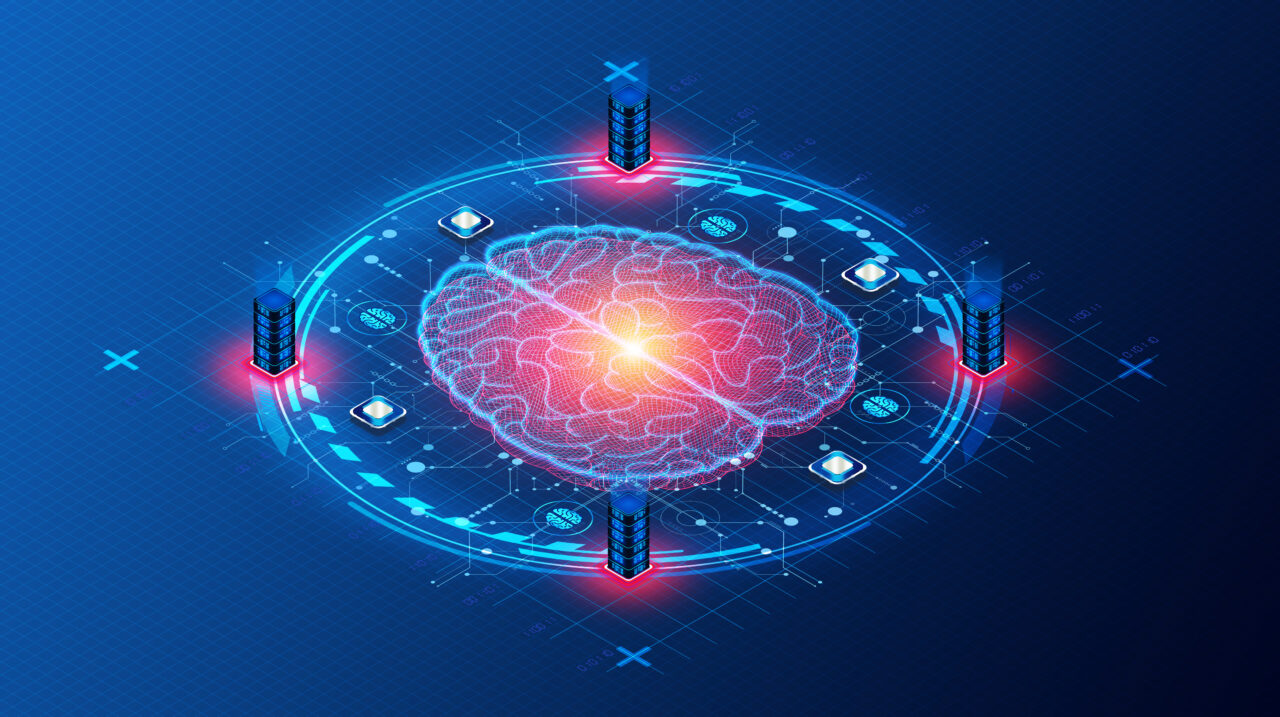Inference in Machine Learning: Algorithms and Applications

Machine Learning Inference: The Real-World Test of AI Models
Machine Learning (ML) inference is the cornerstone of the practical application of artificial intelligence. It’s the process that puts a trained AI model to its real test — using it in real-world scenarios to make predictions or solve tasks based on live data. This phase is akin to an AI model’s “moment of truth” where it demonstrates its ability to apply the learning acquired during the training phase to make predictions or solve tasks. The tasks could range from flagging spam emails, transcribing conversations, to summarizing lengthy documents. The essence of ML inference lies in its ability to process real-time data, compare it with the trained information, and produce an actionable output tailored to the specific task at hand.
The dichotomy between training and inference in machine learning can be likened to the contrast between learning a concept and applying it in practical scenarios. During the training phase, a deep learning model digests and internalizes the relationships among examples in its training dataset. These relationships are encoded in the weights connecting its artificial neurons. When it comes to inference, the model uses this stored representation to interpret new, unseen data. It’s similar to how humans draw on prior knowledge to understand a new word or situation.
However, the process of inference is not without its challenges. The computational cost of running inference tasks is substantial. The energy, monetary, and even environmental costs incurred during the inference phase often dwarf those of the training phase. Up to 90% of an AI model’s lifespan is spent in inference mode, accounting for a significant portion of the AI’s carbon footprint. Running a large AI model over its lifetime may emit more carbon than the average American car.
Advancements in technology aim to optimize and accelerate the inferencing process. For instance, improvements in hardware, such as developing chips optimized for matrix multiplication (a key operation in deep learning), boost performance. Additionally, software enhancements like pruning excess weights from AI models and reducing their precision through quantization make them more efficient during inference. Middleware, though less glamorous, plays a crucial role in transforming the AI model’s code into computational operations. Innovations in this space, such as automatic graph fusion and kernel optimization, have led to significant performance gains in inference tasks.
IBM Research’s recent advancements demonstrate the ongoing efforts to enhance inference efficiency. They have introduced parallel tensors to address memory bottlenecks, a significant hurdle in AI inferencing. By strategically splitting the AI model’s computational graph, operations can be distributed across multiple GPUs to run concurrently, reducing latency and improving the overall speed of inferencing. This approach represents a potential 20% improvement over the current industry standard in inferencing speeds.
Machine Learning Training vs. Inference: Understanding Their Unique Roles
Machine Learning (ML) inference and training serve distinct yet complementary roles in the lifecycle of AI models. The analogy of human learning and application provides an intuitive understanding of these phases. Just as humans accumulate knowledge through education and apply it in real-life scenarios, ML models undergo a similar process of training and inference.
The Training Phase
Training is the educational cornerstone for neural networks, where they learn to interpret and process information. This phase involves feeding the neural network with a plethora of data. Each neuron in the network assigns a weight to the input based on its relevance to the task at hand. The process can be visualized as a multi-layered filtration system, where each layer focuses on specific aspects of the data — from basic features to complex patterns. For instance, in image recognition, initial layers may identify simple edges, while subsequent layers discern shapes and intricate details. This process is iterative and intensely computational, requiring significant resources. Each incorrect prediction prompts the network to adjust its weights and try again, honing its accuracy through repeated trials.
The Transition to Inference
Once trained, the neural network transitions to the inference stage. This is where the accumulated knowledge and refined weightings are put into action. Inference is akin to leveraging one’s education in practical scenarios. The neural network, now adept at recognizing patterns and making predictions, applies its training to new, unseen data. It’s a streamlined and efficient version of the model, capable of making rapid assessments and predictions. The heavy computational demands of the training phase give way to a more agile and application-focused inference process. This is evident in everyday technologies like smartphones, where neural networks, trained through extensive data and computational power, are used for tasks like speech recognition and image categorization.
The modifications made for inference involve pruning unnecessary parts of the network and compressing its structure for optimal performance, much like compressing a high-resolution image for online use while retaining its essence. Inference engines are designed to replicate the accuracy of the training phase but in a more condensed and efficient format, suitable for real-time applications.
The Role of GPUs
The hardware, particularly GPUs (Graphics Processing Units), plays a crucial role in both training and inference. GPUs, with their parallel computing capabilities, are adept at handling the enormous computational requirements of training and the high-speed, efficient processing needs of inference. They enable neural networks to identify patterns and objects, often outperforming human capabilities. After the training is completed, these networks are deployed for inference, utilizing the computational prowess of GPUs to classify new data and infer results based on the patterns they have learned.
The Machine Learning Training Phase: Emerging Trends and Innovations
The training phase of machine learning (ML) models is undergoing a transformative shift, influenced by emerging trends and innovations. These advancements are not just reshaping how models are trained but also how they are deployed, managed, and integrated into various business processes.
MLOps: The New Backbone of ML Training
Machine Learning Operations (MLOps) has emerged as a key trend, providing a comprehensive framework for taking ML projects from development to large-scale deployment. MLOps facilitate seamless integration, ensuring efficient model experimentation, deployment, monitoring, and governance. This methodology has proven effective across various industries, including finance, where legacy systems are transitioning to scalable cloud-based frameworks. The adoption of MLOps also bridges the gap between data scientists and ML engineers, leading to more robust and scalable ML systems.
Embracing Cloud-Native Platforms
The shift towards cloud-native platforms represents a significant trend in ML training. These platforms provide standard environments that simplify the development and deployment of ML models, significantly reducing the complexity associated with diverse APIs. This trend reflects a broader industry movement towards simplifying the data scientist’s role, making the entire ML lifecycle more efficient and manageable. Such platforms are crucial in supporting the growth of cloud-native development environments, virtualization tools, and advanced technologies for processing data, ultimately leading to a unification of MLOps and DataOps.
User-Trained AI Systems and Operationalization at Scale
Innovative ML projects like Gong’s Smart Trackers showcase the rise of user-trained AI systems, where end users can train their own models through intuitive, game-like interfaces. This approach leverages advanced technologies for data embedding, indexing, and labeling, highlighting the trend towards more user-centric and accessible ML training methods.
Data Governance and Validation
Strong data governance and validation procedures are increasingly becoming pivotal in the ML training phase. Access to high-quality data is crucial for developing high-performing models. Effective governance ensures that teams have access to reliable data, speeding up the ML production timeline and enhancing the robustness of model outputs. This trend underscores the growing importance of data quality in the ML training process.
Recent Advancements in Machine Learning Inference
The machine learning (ML) inference phase, where trained models are applied to new data, is experiencing significant advancements, driven by both technological innovation and evolving industry needs.
1. Automated Machine Learning (AutoML)
AutoML is revolutionizing the inference phase by simplifying the process of applying machine learning models to new data. This includes improved tools for labeling data and automating the tuning of neural network architectures. By reducing the reliance on extensive labeled datasets, which traditionally required significant human effort, AutoML is making the application of ML models faster and more cost-effective. This trend is particularly impactful in industries where rapid deployment and iteration of models are critical.
2. AI-Enabled Conceptual Design
The advent of AI models that combine different modalities, such as language and images, is opening new frontiers in conceptual design. Models like OpenAI’s DALL·E and CLIP are enabling the generation of creative visual designs from textual descriptions. This advancement is expected to have profound implications in creative industries, offering new ways to approach design and content creation. Such AI-enabled conceptual design tools are extending the capabilities of ML inference beyond traditional data analysis to more creative and abstract applications.
3. Multi-Modal Learning and Its Applications
The integration of multiple modalities within a single ML model is becoming more prevalent. This approach enhances the inference phase by allowing models to process and interpret a richer variety of data, including text, vision, speech, and IoT sensor data. For example, in healthcare, multi-modal learning can improve the interpretation of patient data by combining visual lab results, genetic reports, and clinical data. This approach can lead to more accurate diagnoses and personalized treatment plans.
4. AI-Based Cybersecurity
With adversaries increasingly weaponizing AI to find vulnerabilities, the role of AI in cybersecurity is becoming more crucial. AI and ML techniques are now pivotal in detecting and responding to cybersecurity threats, offering improved detection efficacy and agility. Enterprises are leveraging AI for proactive and defensive measures against complex and dynamic cyber risks.
5. Improved Language Modeling
The evolution of language models like ChatGPT is enhancing the inference phase in various fields, including marketing and customer support. These models are providing more interactive and user-friendly ways to engage with AI, leading to a demand for improved quality control and accuracy in their outputs. The ability to understand and respond to natural language inputs is making AI more accessible and effective across a broader range of applications.
6. Democratized AI
Improvements in AI tooling are making it easier for subject matter experts to participate in the AI development process, democratizing AI and accelerating development. This trend is helping to improve the accuracy and relevance of AI models by incorporating domain-specific insights. It also reflects a broader shift towards making AI more accessible and integrated across various business functions.
In conclusion, these advancements in ML inference are not just enhancing the performance and efficiency of AI models but also broadening the scope of their applications across various industries.
Understanding Machine Learning Inference: The Essential Components
Machine learning (ML) inference is a critical phase in the life cycle of an ML model, involving the application of trained algorithms to new data to generate actionable insights or predictions. This phase bridges the gap between theoretical model training and practical, real-world applications. Understanding the intricacies of this process is essential for leveraging the full potential of ML technologies.
Key Components of ML Inference
- Data Sources: The inference process begins with data sources, which capture real-time data. These sources can be internal or external to an organization, or they can be direct user inputs. Typical data sources include log files, database transactions, or unstructured data in a data lake. The quality and relevance of these data sources significantly impact the accuracy and reliability of the inference outcomes.
- Inference Servers and Engines: Machine learning inference servers, also known as engines, play a pivotal role in executing the model algorithms. These servers take input data, process it through the trained ML model, and return the inference output. These servers require specific file formats for models, and tools like the TensorFlow conversion tool or the Open Neural Network Exchange Format (ONNX) are used for ensuring compatibility and interoperability between various ML inference servers and model training environments.
- Hardware Infrastructure: CPUs (Central Processing Units) are commonly used for running ML and deep learning inference workloads. CPUs, containing billions of transistors and powerful cores, can handle massive operations and memory consumption, supporting a wide range of operations without the need for customized programs. The selection of appropriate hardware infrastructure is crucial for the efficient operation of ML models, considering both computational intensity and cost-effectiveness.
Challenges in ML Inference
- Infrastructure Cost: The cost of running inference operations is a significant consideration. ML models, often computationally intensive, require robust hardware like GPUs and CPUs in data centers or cloud environments. Optimizing these workloads to fully utilize the available hardware, perhaps by running queries concurrently or in batches, is vital for minimizing costs.
- Latency Requirements: Different applications have varying latency requirements. Mission-critical applications, such as autonomous navigation or medical equipment, often require real-time inference. In contrast, other applications, like certain big data analytics, can tolerate higher latency, allowing for batch processing based on the frequency of inference queries.
- Interoperability: A key challenge in deploying ML models for inference is ensuring interoperability. Different teams may use various frameworks like TensorFlow, PyTorch, or Keras, which must seamlessly integrate when running in production environments. This interoperability is essential for models to function effectively across diverse platforms, including client devices, edge computing, or cloud-based systems. Containerization and tools like Kubernetes have become common practices to ease the deployment and scaling of models in diverse environments.
In conclusion, understanding these components and challenges is crucial for leveraging the full potential of machine learning in real-world applications, ensuring that models not only learn from data but also effectively apply this learning to produce valuable insights and decisions.
Emerging Concepts in Machine Learning Inference
The field of Machine Learning (ML) inference is experiencing rapid growth, with emerging concepts that are reshaping how models are applied to real-world data. These advancements are crucial in making ML models more effective and versatile in a variety of applications.
Bayesian Inference
Bayesian inference, based on Bayes’ theorem, represents a significant advancement in the inference phase of ML. It allows algorithms to update their predictions based on new evidence, offering greater flexibility and interpretability. This method can be applied to a range of ML problems, including regression, classification, and clustering. Its applications extend to areas like credit card fraud detection, medical diagnosis, image processing, and speech recognition, where probabilistic estimates offer more nuanced insights than binary results.
Causal Inference
Causal inference is a statistical method used to discern cause-and-effect relationships within data. Unlike correlation analysis, which does not imply causation, causal inference helps identify the underlying causes of phenomena, leading to more accurate predictions and fairer models. It’s particularly important in fields like marketing, where understanding the causal relationship between various factors can lead to better decision-making. However, implementing causal inference poses challenges, including the need for large, quality data and the complexity of interpreting the results.
Practical Considerations in ML Inference
In the realm of ML inference, practical considerations are crucial for effective deployment. These include understanding the differences between training and inference phases, which aids in better allocating computational resources and adopting the right strategies for industrialization. The choice between using a pre-trained model and training a new one depends on factors like time to market, resource constraints, and model performance. Additionally, building a robust ML inference framework involves considering scalability, ease of integration, high-throughput workload handling, security, monitoring, and feedback integration.
These emerging concepts in ML inference not only enhance the technical capabilities of ML models but also expand their applicability in various industries, leading to more intelligent and efficient systems.
Cutting-Edge Techniques in Machine Learning Inference
The landscape of Machine Learning (ML) inference is rapidly evolving with the advent of innovative techniques that significantly enhance the efficiency and effectiveness of ML applications. Let’s explore some of these state-of-the-art developments.
Edge Learning and AI
One of the pivotal advancements in ML inference is the integration of edge computing with ML, leading to the emergence of edge AI or edge intelligence. This approach involves shifting model training and inference from centralized cloud environments to edge devices. This shift is essential due to the increasing workloads associated with 5G, the Internet of Things (IoT), and real-time analytics, which demand faster response times and raise concerns about communication overhead, service latency, as well as security and privacy issues. Edge Learning enables distributed edge nodes to collaboratively train models and conduct inferences with locally cached data, making big data analytics more efficient and catering to applications that require strict response latency, such as self-driving cars and Industry 4.0.
Mensa Framework for Edge ML Acceleration
The Mensa framework represents a significant leap in edge ML acceleration. It is designed to address the shortcomings of traditional edge ML accelerators, like the Google Edge Tensor Processing Unit (TPU), which often operate below their peak computational throughput and energy efficiency, with a significant memory system bottleneck. Mensa incorporates multiple heterogeneous edge ML accelerators, each tailored to a specific subset of neural network (NN) models and layers. This framework is notable for its ability to efficiently execute NN layers across various accelerators, optimizing for memory boundedness and activation/parameter reuse opportunities. Mensa-G, a specific implementation of this framework for Google edge NN models, has demonstrated substantial improvements in energy efficiency and performance compared to conventional accelerators like the Edge TPU and Eyeriss v2.
Addressing Model Heterogeneity and Accelerator Design
The development of Mensa highlights a critical insight into the heterogeneity of NN models, particularly in edge computing. Traditional accelerators often adopt a monolithic, one-size-fits-all design, which falls short when dealing with the diverse requirements of different NN layers. By contrast, Mensa’s approach of customizing accelerators based on specific layer characteristics addresses these variations effectively. This rethinking in accelerator design is crucial for achieving high utilization and energy efficiency, especially in resource-constrained edge devices.
In summary, the advancements in ML inference, particularly in the context of edge computing, are rapidly transforming how ML models are deployed and utilized. The integration of edge AI and the development of frameworks like Mensa are paving the way for more efficient, responsive, and robust ML applications, catering to the increasing demands of modern technology and consumer devices.
Innovations in Machine Learning Inference for Diverse Applications
Machine Learning (ML) inference, the phase where trained models are applied to new data, is seeing significant innovation, particularly in its application across various industries and technologies.
Real-World Applications and Performance Parameters
- Diverse Industry Applications: ML inference is being utilized in a wide array of real-world applications. In industries like healthcare, retail, and home automation, inference plays a crucial role. For instance, in the medical field, inference assists in diagnostics and care delivery, while in retail, it contributes to personalization and supply chain optimization. The versatility of ML inference allows for its application in different scenarios, ranging from user safety to product quality enhancement.
- Performance Optimization: Key performance parameters like latency and throughput are central to the effectiveness of ML inference. Latency, the time taken to handle an inference query, is critical in real-time applications like autonomous navigation, where quick response times are essential. Throughput, or the number of queries processed over time, is vital in data-intensive tasks like big data analytics and recommender systems. Optimizing these parameters ensures efficient and timely insights from ML models.
Technological Diversity and Integration
- Varied Development Frameworks: The diversity in ML solution development frameworks, such as TensorFlow, PyTorch, and Keras, caters to a wide range of problems. This diversity necessitates that different models, once deployed, work harmoniously in various production environments. These environments can range from edge devices to cloud-based systems, highlighting the need for flexible and adaptable inference solutions.
- Containerization and Deployment: Containerization, particularly using tools like Kubernetes, has become a common practice in deploying ML models in diverse environments. This approach facilitates the management and scaling of inference workloads across different platforms, whether they are on-premise data centers or cloud environments. The ability to deploy models seamlessly across different infrastructures is crucial for the widespread adoption and effectiveness of ML inference.
- Inference Serving Tools: A range of tools are available for ML inference serving, including both open-source options like TensorFlow Serving and commercial platforms. These tools support leading AI/ML development frameworks and integrate with standard DevOps and MLOps stacks, ensuring seamless operation and scalability of inference applications across various domains.
In summary, the advancements in ML inference techniques are broadening the scope of its applications, enhancing the performance and integration capabilities of ML models in diverse real-world scenarios. From improving healthcare outcomes to optimizing retail experiences, these innovations are pivotal in realizing the full potential of ML technologies.



 Jun 14,2024
Jun 14,2024  By Julien Gauthier
By Julien Gauthier